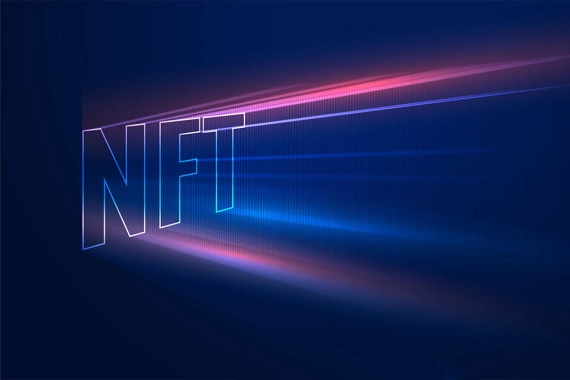Coinspeaker
“Divisible NFT” Newcomer DN404 Promises Improved Features Over ERC-404
New advancements are constantly being made to improve existing protocols, and one such development is DN404. It aims to challenge ERC-404, a recently launched hybrid token and non-fungible token standard. DN404, also known as “Divisible NFT”, introduces exciting new capabilities.
At its core, DN404 aims to enable seamless fractionalized trading of Non-Fungible Tokens (NFTs). This creates the ability to divide ownership of an NFT into smaller, tradable units that can be easily traded across different exchanges. Similar to ERC-404, DN404 is a hybrid token that combines features from the ERC-20 and ERC-721 standards. However, DN404 claims to have built-in fractionalization features. It consists of two key components: a base ERC-20 contract for facilitating fractional trading and an ERC-721 contract for minting and burning NFTs.
According to cygaar, the pseudonymous developer of DN404, this approach fully complies with existing protocols while unlocking new possibilities. Whenever the fractional tokens from the base contract are transferred between wallets, the corresponding NFTs are instantly burned and minted, ensuring a balance between the two sides of the system. This allows holders to trade fractions of NFTs without needing intermediaries while still retaining the option to withdraw the complete NFT if they accumulate enough fractional units.
Excited to launch the "Divisible NFT" standard (DN404) which aims to be a hybrid ERC20/721 token.
ERC404 took the crypto world by storm over the past few days, but it doesn't follow existing standards, is inefficient, and breaks at certain edge cases.
Here's how DN404 works 🧵: pic.twitter.com/3kj504Gb97
— cygaar (@0xCygaar) February 12, 2024
The ultimate vision of DN404 is to seamlessly combine fractionalized trading and NFT ownership, enabling efficient transfers across centralized and decentralized trading platforms. However, it’s important to note that DN404 has not yet undergone formal auditing. As with any new standard, it will require scrutiny from security experts before it gains significant adoption. Nevertheless, the promises made by DN404 are intriguing, especially for NFT holders looking for increased liquidity.
The Call for Caution
There are still some unanswered questions regarding the safety and reliability of the established ERC-404 standard. Following DN404’s announcement, a developer named quit raised concerns about a potential vulnerability that could allow ERC-404 token holders to illegally drain NFTs from certain lending protocols.
These warnings prompted a response from the creator of ERC-404, ctrl, who claimed that quit had deployed an improper contract. ctrl also mentioned that auditing is currently in progress for an updated version. Nevertheless, this lingering uncertainty raises doubts about the readiness of ERC-404 for widespread use. For users considering getting involved with either standard at this early stage, it would be wise to exercise caution.
8/ Now, remember how Pandora uses the max token ID to determine what kind of transfer to execute.
Also remember that depositor 2 has 1*10^18 tokens to available to withdraw.
Let's withdraw some of those tokens. Not all, but just a small fraction…like maybe 38,916 of them. pic.twitter.com/iffHJEDyS0
— quit (👀,🦄) (@0xQuit) February 8, 2024
The Road Ahead
DN404’s success will depend on how well it is executed, adopted by users, and how securely it operates. With developers competing in the evolving blockchain space, it’s important to separate hype from reality. Regardless of the outcome, the recent disagreement shows the ongoing innovation in the Web3 world, where competition drives progress but also comes with risks.
In addition, DN404 represents the ongoing innovation in the blockchain ecosystem. When protocols like ERC-404 face challenges, new projects quickly emerge to address perceived weaknesses. Ultimately, the current challenges faced by ERC-404 and Pandora (PANDORA) serve as a reminder of the endless creativity that arises from intense competition in this decentralized landscape.
For investors, there are risks and rewards associated with exploring new paths in this evolving field. Therefore, those interested in getting involved should carefully assess risks, verify security measures, and make informed decisions before diving into these relatively untested waters.
“Divisible NFT” Newcomer DN404 Promises Improved Features Over ERC-404





